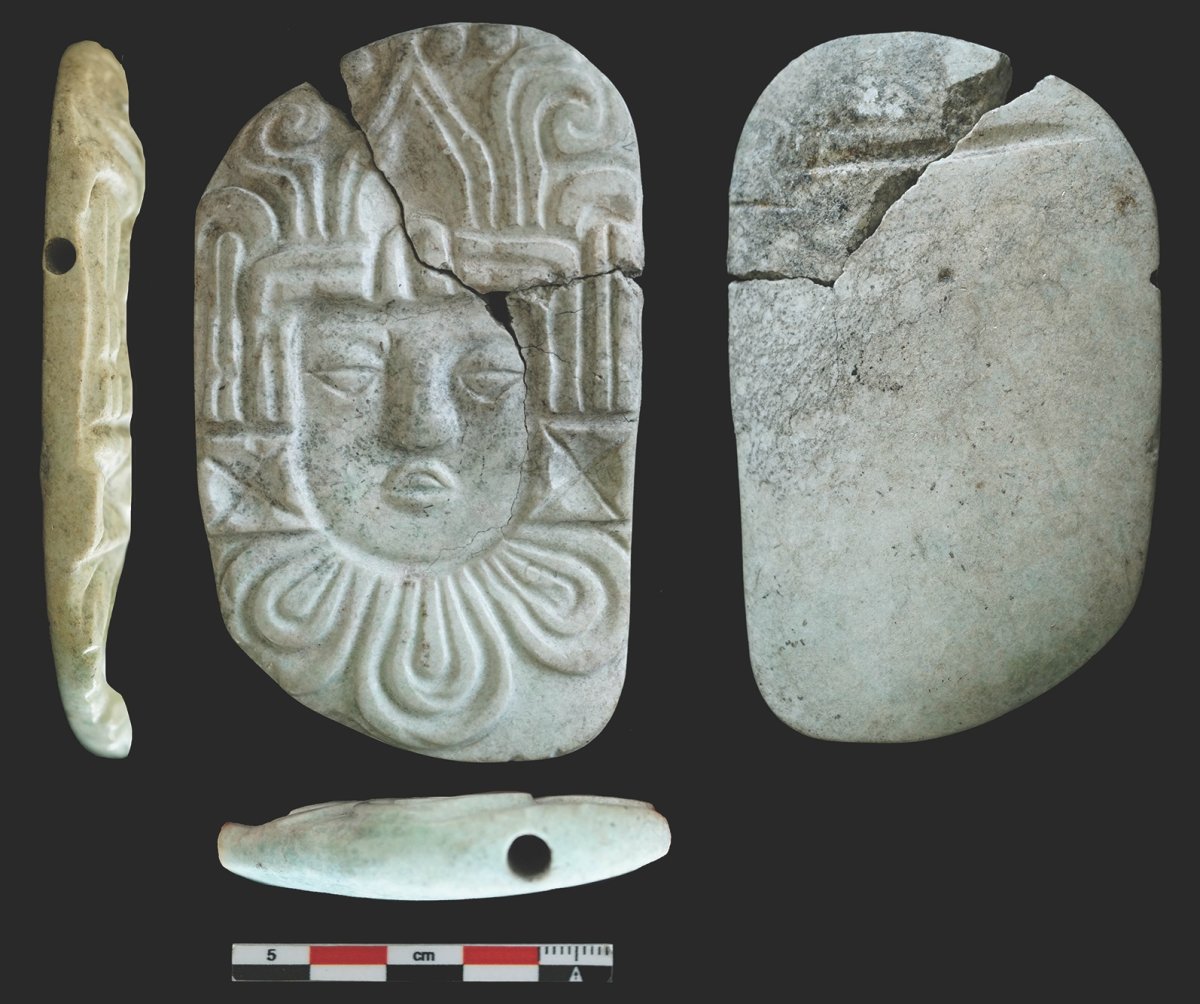Archaeologists excavating an ancient Maya pyramid have uncovered royal remains that appear to have been burnt in an apparent "act of desecration", and Newsweek spoke to the lead researcher about the details.
A team of researchers found the remains during investigations at the archaeological site of Ucanal, Guatemala, which was once the capital of a Maya kingdom called K'anwitznal.
A study describing the findings, published in the journal Antiquity, suggests that the ritual burning event, which took place in the 9th century, marked the takeover of a new political regime and was a public display of power. This represents a very rare example of political regime change appearing in the archaeological record, according to the authors.
"Key tipping points of history are rarely found directly in the archaeological record, not least because an event's significance often lies in the perception of the participants," the authors wrote in the study. "This article documents an early 9th-century ritual fire-burning event at the Maya site of Ucanal in Guatemala and argues that it marked a public dismantling of an old regime."

During excavations of the "K2" temple-pyramid at Ucanal, the research team, led by Christina Halperin with the Department of Anthropology at the University of Montreal, Canada, discovered a deposit containing burnt human remains and ornaments.
Analysis of the human remains indicates that they represent at least four individuals, all adults ranging from 21-60 years old, Halperin told Newsweek. At least two of the individuals show evidence of having been burnt.
The ornaments found in the deposit include almost 1,500 fragments of greenstone pendants, beads, plaques and mosaics; dozens of objects made from obsidian; and more than 10,000 marine shell beads (both complete and fragmented); as well as other artifacts, such as pendants made of mammal teeth. Among the most notable finds was a greenstone funerary mask.
As with the bones from two of the individuals, most of the ornaments show evidence of burning at high temperatures, likely up to around 1,500 degrees Fahrenheit. The quantity and quality of the burnt and broken ornaments indicate that the burial was that of Maya royalty, according to the researchers.
Using radiocarbon analysis and ceramic dating techniques, the authors determined that the burning event likely occurred between A.D. 773-881. This places the event at the very beginning of the Terminal Classic period in Mesoamerican history, which corresponds to the last century or so of the Classic period (around A.D. 250-900).
However, it appears that the royals from the burial died sometime before the burning event. Radiocarbon analysis of one of the individuals indicates that they died several decades—up to a century—before the date of the fire-burning rite.
This suggests that the tomb of the royal individuals was re-entered specifically for the purposes of burning the remains, which were then deposited in the temple-pyramid.
The researchers argue that the burning event was part of a political act that marked the symbolic and literal destruction of an older K'anwitznal dynasty, ushering in a new regime. The event overlapped chronologically with the emergence of a new leader called Papmalil—who reigned between A.D. 814–859—hinting that he was a key figure in this political transition.
It is not clear where the burning ritual itself took place—for example, it does not appear to have occurred in the place where the remains were found given the lack of fire damage. But the fact that the remains were deposited within the context of a ceremonial building in one of the major public plazas at Ucanal suggests that locals were likely aware of the events related to the removal of the contents of a royal tomb and their subsequent burning, according to Halperin.
Other ancient Mesoamerican fire-burning rites, such as one from the Seven Temples Plaza at Tikal, Guatemala, did indeed take place in a public plaza.
"The fire-burning event of the burial deposit was likely a dramatic public affair," Halperin said in a press release. "Because the fire-burning event itself had the potential to be highly ceremonial, public and charged with emotion, it could dramatically mark the dismantling of an ancient regime."
The ritual re-entering of tombs and burning of royal remains is previously known from Maya hieroglyphic texts. These "fire-entering" rituals had the potential to be an act of veneration, as well as an act of destruction, depending on the context.
"We interpret the burnt deposit in the K-2 temple-pyramid to have been an act of desecration because the burnt remains were deposited haphazardly and with little care," Halperin told Newsweek. "Unlike cremation burials placed in urns, no effort was made to protect the remains. Construction fill was thrown on top of it, causing bone and ornament fragments to scatter during the process of its burial."
"We know from the hieroglyphic record that fire-burning rites involving the re-entry of royal Maya tombs occurred in the past, but it is rare to find archaeological evidence of such rites and especially those that corresponded to a major episode of political and social change," she said
Although the beginning of the Terminal Classic period is often associated with the collapse of Classic Maya political systems, the latest discoveries and the team's research in other parts of the ancient city of Ucanal demonstrate that even though some regimes came to an end, in some cases they were reworked, leading to periods of prosperity.
"At the time of the fire-burning event, many [Maya] polities were experiencing crises with some settlements partially abandoned and some royal dynasties collapsing," Halperin said.
"Nonetheless, not all Maya polities had the same fate. Some kingdoms, such as the K'anwitznal kingdom, reinvented itself, engaging in more prolific trade networks, undergoing urban renovations including water infrastructure systems that benefited both elite and non-elite residents, and participating in artistic developments shared as far away as northern Yucatan and Central Mexico."
Do you have a tip on a science story that Newsweek should be covering? Do you have a question about archaeology? Let us know via science@newsweek.com.
Update 4/19/24, 10:33 a.m. ET: This article was updated to amend the headline.
Uncommon Knowledge
Newsweek is committed to challenging conventional wisdom and finding connections in the search for common ground.
Newsweek is committed to challenging conventional wisdom and finding connections in the search for common ground.
About the writer
Aristos is a Newsweek science reporter with the London, U.K., bureau. He reports on science and health topics, including; animal, ... Read more
To read how Newsweek uses AI as a newsroom tool, Click here.








